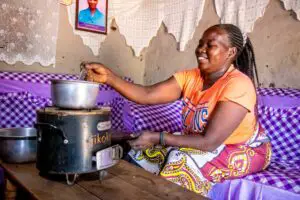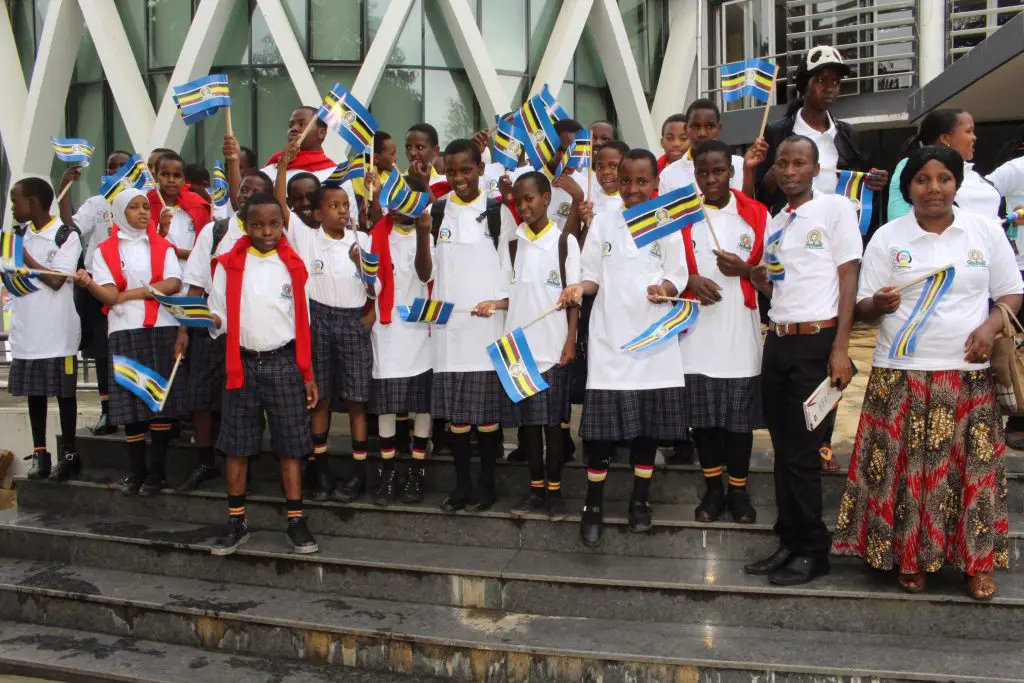- Dawood Al Shezawi: Why AIM Congress 2024 is the epicenter of global economic and cultural dialogues
- d.light’s 600,000 cookstoves project verified as top source of quality carbon credits
- Artificial intelligence (AI) could create a turning point for financial inclusion in Africa
- AIM Congress 2024: Catalysing global investments with awards
- Kenya’s economic resurgence in 2024
- The most stressful cities to live in 2024 exposed
- Tech ventures can now apply for the Africa Tech Summit London Investment Showcase
- State of journalism survey 2024 shows media houses are lagging in AI adoption
Browsing: East African Community (EAC)
A Zimbabwean public service officer, the former Chief Executive Officer of the Zimbabwe National Road Administration (Zinara) is allegedly involved in a graft cases that has cost the agency losses in excess of USD40 million.
Mr Frank Chitukutuku, the accused official, is facing a list of economic sabotage cases all surrounding what local media is calling ‘dubious payments’ for supposed public works. The list of irregularities is long, from payments for substandard work to over payment for projects without the agency’s board ever approving.
There are also issues of flouting tender procedures, hand-picking firms, payment for incomplete work and the bias awarding of projects in favour of companies that he has interest in or belonging to individuals in his favour.
Zimbabwe’s Parliamentary Portfolio Committee on Transport and Infrastructural Development deliberated the matter in detail earlier this month and resolved to fire the CEO while legal proceedings are underway.
Among the …
Based in Ethiopia’s capital of Addis Ababa, Coop Bank is growing by leaps and bounds, with profits up 29 percent in the 2018/19 financial year closing the year with USD 20.4 million under lock and key.
More than profit, the Bank also enjoyed huge growth if it’s total assets which shot up by 40 percent, a sector high for Ethiopia’s banking industry. Likewise, its loans and advances also went up an impressive 56 percent representing more than double its performance in the previous year.
The bank has credited the asset growth to deposit mobilisation which pushed up loans and advances. The bank had yet an impressive growth this time in deposits which increased 40 percent.
Coop Bank mustered its investment in NBE bonds which it increased to more than double (53%) of what it had in the previous financial year. Further still, this immense investment represents 20 percent of its …
Tanzania’s Controller and Auditor General (CAG) has unveiled the country’s Local Government Authorities (LGA) have been involved in the embezzlement of millions of dollars issued to fund nonexistent projects.
Reporting to the country’s President John Magufuli, the CAG’s report indicated that LGA’s across the country have been corruptly siphoning tax payers money for individual gain. The 2018/19 report shows what can only be described as gross mismanagement of public funds.
In the report, Tanzania’s CAG Mr Charles Kichere also reported the gross misuse of funds in excess of USD 342.2 million by the country’s Local Government Authorities (LGA).
Worse still, while the LGAs collected more than USD 46.5 million in the said financial year, only 26.37bn/ was allocated to the rightfully designated development projects while the remaining 17.41bn/- was, according to the CAG report, misused.
Further still, another 10.39bn/- in local revenue that was collected by some 84 Local Government …
In a bid to keep the sector going, the Tanzanian government has announced plans to significantly lower hunting permit fees.
The relief comes shrouded by coronavirus threat which is the push behind the announced review of annual hunting blocks license fees.
Local media quoted the Deputy Minister for Natural Resources and Tourism, Mr Constantine Kanyasu, announcing the fee slash plans. According to the high government official, the planned fee cut is in response to requests by hunting companies who are complaining of reduced bookings owing to the global coronavirus threat.
“The Ministry of Natural Resources and Tourism will meet hunters again before the end of this month to inform them on the government’s action to rescue the subsector,” the Deputy Minister told media.
On behalf of the hunting companies, the Tanzania Hunting Operators Association (Tahoa) pointed out that there is still room to review the fees ahead of the hunting …
Food security has always been a matter of much concern across Africa, the threat has only been extenuated by the worsening coronavirus outbreak.
With the rest of the World tied up with response to the coronavirus in their own countries, scientists in Africa have to step up to the food security threat on the continent.
Up to the task are Tanzanian scientists who early this week, in the nick of time, announced a breakthrough in maize research that may very well answer the impending food security threat.
The Tanzania Agricultural Research Institute, announced its scientists have developed two genetically modified maize varieties that to a great extent, stand to solve the food security issue in the country and region at large.
First is a maize variety that is much higher in protein concentration than the regular maize types now been grown across the country. This variety will serve to give …
As the rest of the country shuts down all entry ports, heavily reliant on tourism, the spice Isles of Zanzibar are allowing charter flights to land but with strict conditions.
Isles authorities have permitted charter flights bringing tourists to the island to land but on condition that all persons on board enter a 14 days quarantine stay, at their own expense.
This surprising turn of events happens in the backdrop of ongoing global threat of the spread of coronavirus. Even leading sports leagues have been cancelled and regional high profile meetings are been held on conference calls.
Across Africa, the tourism industry has come to an almost complete shutdown. It is time immemorial since a disease stopped people from touring and going for holidays, at least not since the deadly World War I and II power viruses.
With most all African countries eventually succumbing to the threat and finally closing …
There are now more than 100,000 mini-grid stations across Africa, these little power generation stations are serving to bridge Africa’s rural power gap and Tanzania is no exception.
While the country leads Africa in rural electrification efforts, there is still huge gap between demand and supply and the solution to cover it lays in mini-grids, small power stations that generate power at localized remote points.
To date, Tanzania has well over 100 mini-grids that provide electrical power to over 250,000 people in remote corners of the country. These mini-grids provide close to 200 MW using biomass, fossil fuel and solar systems as well as hybrids of these energy sources.
Tanzania’s national policies also support adoption of renewable energy technologies. Off-grid electrification using renewable energy technologies can offer a power solution to rural and remote areas. These efforts are inline with the global Sustainable Development Goals.
SDG number 7 calls for …
The East Africa 15 (EA15) highlights on 15 of the most traded and highly capitalized stocks in the region on a monthly basis. The primary purpose of the EA15 is to give investors a description and perspective of the regional stock markets’ performance.
Kenya: Nairobi Securities Exchange (NSE)
The monetary policy committee reviewed the Central Bank Rate downward to 8.25% extending the loose monetary stance. The decision was on the back of a stable shilling, inflation remaining within target and improving private sector credit growth- which expanded by 7.1% in the year to December.
Adequate CBK foreign exchange reserve has helped the Kenya shilling to weather short-term shocks against major world currencies. To the US dollar, the shilling averaged lower by 0.74% to Kes100.6 compared to last month with highs of Kes100.4 recorded.
Liquidity improved month-on-month as interbank averaged at 4.4% compared to 4.9%. Short-term debt rates were relatively stable …
The East Africa 15 (EA15) highlights on 15 of the most traded and highly capitalized stocks in the region on a monthly basis. The primary purpose of the EA15 is to give investors a description and perspective of the regional stock markets’ performance.
EAC countries’ economies had a turbulent time in 2019 characterized by rising public debt against missed revenue targets,slow private sector growth and under-par performance of traditional key sectors of the economy such as tourism, agriculture and manufacturing. Further, regional trade which was earmarked as crucial to economic development has been marred by trade spatssuch as protectionism resulting in a decline involume and value of intra-regional trade.
The region is looking to maintain a loose monetary stance to boost private sector growth and more importantly,resolve disputes in order to intensify regional trade. Despite the tough economic environment, the region’s GDP is projected to grow the fastest in sub-Saharan …
The East African Community has marked its 20th Anniversary with pomp and fanfare at its Headquarters in Arusha, Tanzania.
This comes as the community mulls over the inclusion of The Democratic Republic of Congo into the community, which would not only give the community a major population rise but also a coast to coast linking both the East African coast and the West African coast. Though the considerations are yet to be approved, policy analysts believe this move is a matter of when not if. However, there is still contention on whether to include the East most country, Somalia which has also expressed interest.
Uganda’s 2nd Deputy Prime Minister and Minister for EAC Affairs, Hon. Dr. Ali Kirunda Kivejinja, who presided over the anniversary celebration, said that EAC Partner States would not repeat the mistake of the past that led to the collapse of the first Community.
Dr. …










